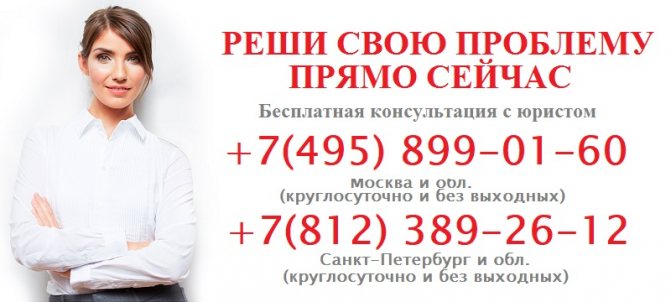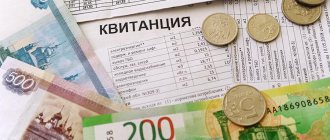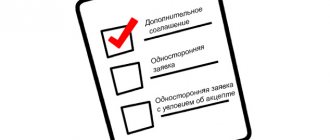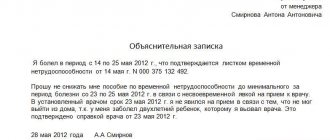Free legal consultation over the Internet 24 hoursLawyer on housing issues in St. Petersburg. Free legal consultation on labor disputes.
4.84/5 (50)
What are multiplying factors?
In order to encourage the country's population to install utility consumption meters, the Government of the Russian Federation adopted Resolution No. 344 on April 16, 2013.
Important! According to this regulatory act, in those houses where it is technically possible to install meters, but residents for one reason or another do not do so, fees are charged for the provided utility services according to the standard, which is multiplied by an increasing factor.
So, for example, from January 1, 2018, an increasing factor of 1.5 was established. In practice, this means that local governments increase standards by 50 percent.
Current water supply regulations
If they refused to install metering devices, you should wait for receipts where the fee has been increased. For general household consumption, they are calculated depending on the current standards.
The government issued Resolution No. 603, on the basis of which the increasing coefficients were temporarily suspended. From June 2021 the odds have been cancelled.
Information
From now on, additional fees can be introduced only for the supply of hot and cold water. You can check for yourself whether the accrual is correct.
HVS
To calculate the results, the total number of residents at the address is multiplied with the following several indicators:
- The level of tariff, the setting and regulation of which is the responsibility of local government.
- The standard value for the increase factor is 1.5.
- Standardized consumption of cold water.
DHW
Here everything is determined by the tariff method chosen by the management company.
- For cubic meters, the calculation method is the same as in the previous case.
- Another thing is when so-called two-component tariffs are applied.
The situation requires separate calculation rules for water with low or high temperatures. It is necessary to multiply the standard volumes of water with the amount required to maintain the correct temperature. The total is the amount to which increasing factors are also added.
A few simple calculations are enough to see that without meters, the costs are greater than the benefits.
What services are covered?
As of the beginning of 2021, the use of increasing tariffs is used when billing for cold and hot water supply services. The situation is the same in the electricity market.
What is drainage on a payment receipt?
What to do if you bought an apartment with housing and communal services debts, read here.
Is it possible to refuse a water meter and pay according to the standard, read the link:
At the same time, by government decree No. 603, which was adopted on June 29, 2016, increasing coefficients for wastewater services were cancelled. This requirement is duplicated by a letter from the Ministry of Construction, which was sent on September 2, 2016 under No. 28483 – ACh / 04.
The rules and procedure for applying increasing coefficients in relation to heat payments have been repeatedly changed. The last time the Government of the Russian Federation canceled their use, as stated in the relevant Resolution No. 232 of 02.27.17.
The essence of the applied innovations is as follows:
- If a heat meter is not installed in an apartment building, then homeowners are not issued invoices for payment with increasing coefficients. This is stated in paragraph 42 of Government Resolution No. 354;
- however, the management company that did not bother to install the meter must pay 10 percent more than the amount they charge the residents. That is, the supplier issues an invoice to the management company, HOA or housing cooperative using a multiplying factor of 1.1.
This provision is also enshrined in paragraph 22 of the Decree of the Government of the Russian Federation of February 14, 2012 No. 124.
Attention! Our qualified lawyers will assist you free of charge and around the clock on any issues. Find out more here.
How it is used
It turns out that the average family of three people consumes 14.55 cubic meters of cold water and 12.03 cubic meters of hot water. When these indicators are multiplied by the tariff and the multiplying factor, a significant cost of utility services is obtained.
What is the increasing coefficient for utilities?
The adopted Decree of the Government of the Russian Federation dated 02/27/2020 N 232 “On amendments to certain acts of the Government of the Russian Federation” and Decree of the Government of the Russian Federation dated 06/29/2020 N 603 “On amendments to certain acts of the Government of the Russian Federation on the provision of utility services” are directly related to the development of sales of our company.
By accepting (accepting) the offer of consent, placing a check box on the website. The user gives his consent to Business IT LLC, which owns the website www.biz-it.ru and which is located at Stavropol, 1st Promyshlennaya St., 3A (hereinafter referred to as the Company), to process his personal data with the following conditions:
- invitation and registration to events held by the Company;
- invitation and registration to training courses conducted by the Company and its subsidiaries and partners;
- conducting promotions, surveys, research;
- providing the User with information about the services provided by the Company, about the development of new products and services; about the services of subsidiaries and partners; informing the User about offers for the Company’s products and services;
- attracting and selecting candidates for work in the Company.
Application for software product demonstration
In paragraph 42 of Rules No. 354 (as amended by Resolution No. 603), a paragraph is introduced on the application of an increasing factor of 1.4 (included in formula 4(1)) to consumption standards (if it is technically possible to install cold water meters), which turns out to be applicable only to residential premises in apartment buildings.
The Government of the Russian Federation, since 2009, has been pursuing a policy in the housing and communal services sector aimed at energy saving and increasing energy efficiency. According to Federal Law No. 261-FZ dated November 23, 2009, all residents of Russia, if technically possible, were required to install individual meters for water, heat and electricity by July 2012, and for natural gas by January 1, 2015.
You might be interested ==> Third child in the family payments 2021 in the Belgorod region
Resolution No. 603 of June 29, 2016, in particular, introduces the use of an increasing coefficient when calculating fees for utilities consumed in residential premises that are not equipped with metering devices, if such a possibility exists. Thus, from July 1, 2021, providers of public utilities for hot and cold water supply and electricity are required to make charges taking into account a coefficient of 1.4 for all subscribers in whose apartments do not have metering devices installed. From January 1, 2021, this coefficient, according to the Resolution, will be increased to 1.5. At the same time, from July 1, 2021, increased utility consumption standards applied to apartments where metering devices are not installed will be cancelled.
According to the Decree of the Government of the Russian Federation dated June 29, 2016 No. 603, from July 1, 2021, an increasing coefficient is established in the amount of payment for cold and hot water supply and electricity for subscribers who have not installed individual metering devices if technically possible.
In a room of a communal apartment that is not equipped with a common (apartment) metering device for cold water, hot water and electrical energy, if there is an obligation to install such a metering device, the amount of payment for utility services for cold water supply, hot water supply (except for the case of establishing two-component tariffs for hot water ), power supply in accordance with paragraph 50 of the Rules is determined by formula 7 (1):
In what cases can they be used?
The use of increasing factors is permissible only if it is technically possible to install a meter in a residential building.
What is technical feasibility, and in what cases is it applicable or not applicable, the criteria for the lack of technical feasibility - all this is stated in the order of the Ministry of Economic Development. It was published on December 29, 2011 under No. 627.
Please note! However, in order to make such a conclusion, an inspection report must be drawn up for each residential building. This order specifies the form of the document and the procedure for its preparation.
The conclusion follows from this order that if a heat meter is not installed in the house, and its absence is not justified by the inspection report, then an increasing coefficient must be applied.
However, under certain conditions, the use of an increasing coefficient is possible even if there is an installed meter.
This is possible in the following cases:
- meter failure;
- expiration of the meter verification date;
- denial of access to the supplier or a representative of the management company to the metering station in order to verify its readings and the correctness of the transmitted data.
ATTENTION! Look at the completed sample application to the Prosecutor's Office against the Criminal Code about illegal charging of utility bills:

When to use
For any of the cases listed below, the standard approved by the local authorities is applied, and the increasing coefficient for rent is used from a certain date.
If the apartment does not have meters.
It is possible to connect devices, but they are not installed by the consumer. The lack of connection due to technical capabilities is proven by a signed act (conclusion); only then is the reason considered valid for the management company’s non-application of the increased standard, as specified in clause 4, part 1 of Appendix 2 of Government Resolution 354 of 05/06/2011[4].
The meter verification period has expired.
Applicable starting from 4 months from the verification expiration date (3 months the fee will be charged based on the average of the previous 6 months).
A faulty meter is used.
The reason is important:
- without signs of intentional damage: will be used starting from the 4th month (for the first 3, including the month the malfunction was detected, the average consumption is taken from the data of the previous 6 months);
- in case of deliberate intervention resulting in a malfunction: accrued payments are recalculated starting from the date of the previous inspection, but no more than for the previous 3 months. In this case, the multiplying factor is 10.
There is no access for representatives of the management company to check meter readings.
Applies from the 1st day of the 4th month from the date of filling out the act. It also applies to days from the date of signing the document on the impossibility of verification.
Cases when use is unacceptable
If a heat meter is installed, put into operation, and its readings about the amount of service provided are transmitted on time, then the increasing factor is not applied.
Important! Invoices are issued for payment based on meter readings and established tariffs.
Service providers are required to use the money received as payment for heating services for the maintenance of communication systems that provide heat.
The rules for applying increasing coefficients have some exceptions.
These include the following situations when coefficients are not applied:
- if the hot water supply is used for heating the living space;
- if residents live in a communal apartment where it is impossible to install and use metering devices;
- a residential building or apartment is equipped with a drainage system.
Thus, the use of increasing factors is impossible in cases where there are no technical conditions for the installation and use of metering devices. The listed situations also include dilapidated houses that are declared unfit for habitation.
Another example of where metering devices cannot be installed, even if it is technically possible. This applies to premises in which the consumption of electrical energy does not exceed 5 kW, and less than 0.2 Gcal / hour is spent on heating.
If such facilities exist, then suppliers are prohibited from conducting a survey of the premises in order to establish the technical feasibility of installing a metering device.
Increasing coefficient for heating

The installation of in-house heat meters by the owners of residential premises, as well as the same actions on the part of the management company, co-owners' association, housing cooperatives for the equipment of a common building metering unit, make it possible to pay for heat energy based on consumption.
Standard values do not apply in such cases.
Due to the fact that the supplier has the right to dispose of funds received from homeowners independently, at the end of February 2021 the increasing coefficient was reduced. Its value became 1.1, and before that the coefficient was 1.5. For 2021, the coefficient of 1.1 remains.
The application of the increasing coefficient applies only to homeowners, as well as legal entities that use premises to provide social needs.
Despite the fact that the change in the coefficient occurred at the beginning of March, all heat supply organizations are required to apply it from the beginning of the year. Therefore, from 01/01/2017, the amounts that were indicated in the bills for utility bills must be recalculated.
Watch the video. Increasing coefficients in the absence of metering devices:
For water supply
As for paying for water supply, if the owner of the apartment did not bother about installing metering devices, then he will receive bills using a multiplying factor. And general household water consumption will be paid according to established consumption standards.
By Government Decree No. 603, the introduction of increasing coefficients for wastewater disposal has been suspended. And does not apply from June 2016 to the present.
Thus, establishing an increasing coefficient, and therefore an additional fee, is possible only for hot and cold water supply.
You can check the accuracy of the calculations made by the management company when issuing water bills yourself.
HVS
Attention! To calculate the amount of payment for cold water supply, the following calculations are performed - the total number of registered residents of the house is multiplied by:
- approved standard for cold water consumption;
- increasing factor of 1.5;
- tariff approved by the local government.
DHW
The calculation of the amount of payment for hot water supply depends on the method used by the management company or resource supply organization to tariff hot water consumption:
- if the calculation is in cubic meters, then the calculation is made in the same way as for cold water supply;
- if according to a two-component tariff, then payment for cold water and separately for thermal energy are taken into account. In this case, the calculation is made using a different approach - the volume of water, which is required according to the consumption rate, is multiplied by the cold water component, the volume of heat that is necessary to maintain the required hot water temperature. A multiplying factor is applied to the amount received.
As simple calculations show, the lack of individual meters for cold and hot water consumption leads to a significant increase in the cost of utility bills!
What services are covered by this rule?
The rules apply to hot and cold water supply, as stated in the 2018 rules. The rule also applies to the electricity market.
But in addition, the Government issued Resolution No. 603. It says there that such coefficients have been canceled in relation to wastewater disposal. Information on payment for such areas of service has been subject to adjustments more than once. The last time the Government considered this issue was back in 2017.
Here's how to describe the essence of the current innovations:
- Any home where the owners refused to install meters will receive increased bills.
- An additional 10% is charged to the management company on top of the amounts paid by residents. This is facilitated by the use of increasing factors of 1.1.
For electricity
Metering devices must also be present when receiving electrical energy. The Federal Law “On Energy Saving” obliges all citizens to install electricity meters. In this case, the meters must have an accuracy class of 2.0 or higher.
Since the cost of the meter itself and the services for its installation are included in the tariff, this procedure will be performed free of charge for the consumer.
If electricity consumption is carried out without a meter, then a tariff with an increasing coefficient of 1.5 is applied. Exactly the same as when paying for water supply.
For owners of private houses
Important! In order for an increasing factor to be applied to a private household, garden house or individual housing construction, the individual house must be recognized as a “residential premises”.
That is, there must be a corresponding decision from the local government on the suitability of the house for permanent residence of people. And the living conditions meet sanitary and technical requirements.
Private households must be equipped with the necessary metering devices. In this case, the consumption of cold water must be taken into account, especially if it is used for agricultural needs. And the house itself stands on a separate plot of land.
If you know the tariffs that apply in a particular region, you can determine how much you will have to pay if your home is not equipped with a meter. The data can be found from the payment slip. The base rate and consumption standards must be indicated there.
An example of calculating the increasing coefficient using the formula
To apply a multiplying factor when billing for cold and hot water supply and the supply of electrical energy, a special formula is used.
It is provided for in subparagraph “a” of paragraph 4 of Appendix No. 2 to the Rules for the Provision of Public Utilities.
And it is as follows: Pi = ni × Nj × KPOV × Tcr,
Where:
- ni – the number of citizens permanently and temporarily residing in the i-th residential premises;
- Nj is the consumption standard for the jth utility service;
- KPOV – increasing coefficient;
- Tkr – tariff (price) for a utility resource, established in accordance with the legislation of the Russian Federation.
Thus, for a family of three people, which is registered in an apartment of a standard nine-story apartment building in the city of Ufa, if the housing is not equipped with cold water meters, the payment for cold water supply in one billing period will be:
3 × 4.8331 × 1.5 × 23.772 = 516.96 rubles.
It should be remembered that an increasing factor can be applied if an appropriate act is drawn up indicating the technical impossibility of installing a metering device.
The procedure for establishing the presence or absence of technical capabilities is determined and formalized in accordance with the order of the Ministry of Regional Development of Russia dated December 29, 2011 No. 627. This requirement is also enshrined in paragraph 81 of the Rules for the provision of public services.
Fee calculation
When the payment for a water resource is calculated in a room where there is no individual management system, the standard for each registered person is applied. The resulting amount is multiplied by the applicable increase rate.
Algorithm and calculation rules
The size of the boosting multiplier is a fixed value. It is approved at the federal level and is mandatory for use throughout Russia.
Formula for calculating the monthly fee for water resource consumption taking into account the indicator:
P = KolP * N * KP * T, where:
- P – total amount payable on the housing and communal services receipt;
- KolP - the number of people who are permanently registered in the specified premises;
- N – resource consumption standard established for calculation;
- KP – increase multiplier;
- T – tariff.
Recently, the rate throughout the country has been set at 1.5.
For clarity, we need to give an example of a calculation:
There are 3 people registered in apartment No. 3. The established consumption standard is 5.1 cubic meters. m/per person. The approved tariff for payment for each cubic meter of water consumed is 25, 33 rubles.
Calculation: 3 * 5.1 * 25.33 * 1.5 = 581.33 rubles residents of this apartment pay monthly for water supply.
Another example:
There are 2 people registered in apartment No. 5. The approved standard for cold water consumption is set at 5.1 cubic meters per person, the tariff is 25.33 rubles for each cubic meter. Calculation: 2*5.1*25.33*1.5=387.6 rubles monthly this family pays for cold water supply.
Cost comparison
On average, a family of 2 people consumes about 4 cubic meters of cold water per month. The consumption fee is exactly the same as in the absence of meters.
A comparison can be made:
- meter payment per month 4 * 25.33 = 101.32 rubles;
- fee with IPU 2 * 5.1 * 25.33 * 1.5 = 387.6 rubles.
Obviously, a family of 2 people in the apartment where water meters are installed saves more than 200 rubles per month on cold water charges. Therefore, installing meters pays off quite quickly!
But the benefit is obvious if the family is small, and the number registered corresponds to the actual number of residents. If it’s the other way around, then there is no benefit.
For example: 3 people are registered, but actually 7 live (about 18 cubic meters are consumed per month).
Comparison:
- monthly meter payment 18*25.33=455.97 rubles;
- fee without IPU 3*5.1*25.33*1.5=387.6 rubles
It is more profitable for this family not to install meters!









